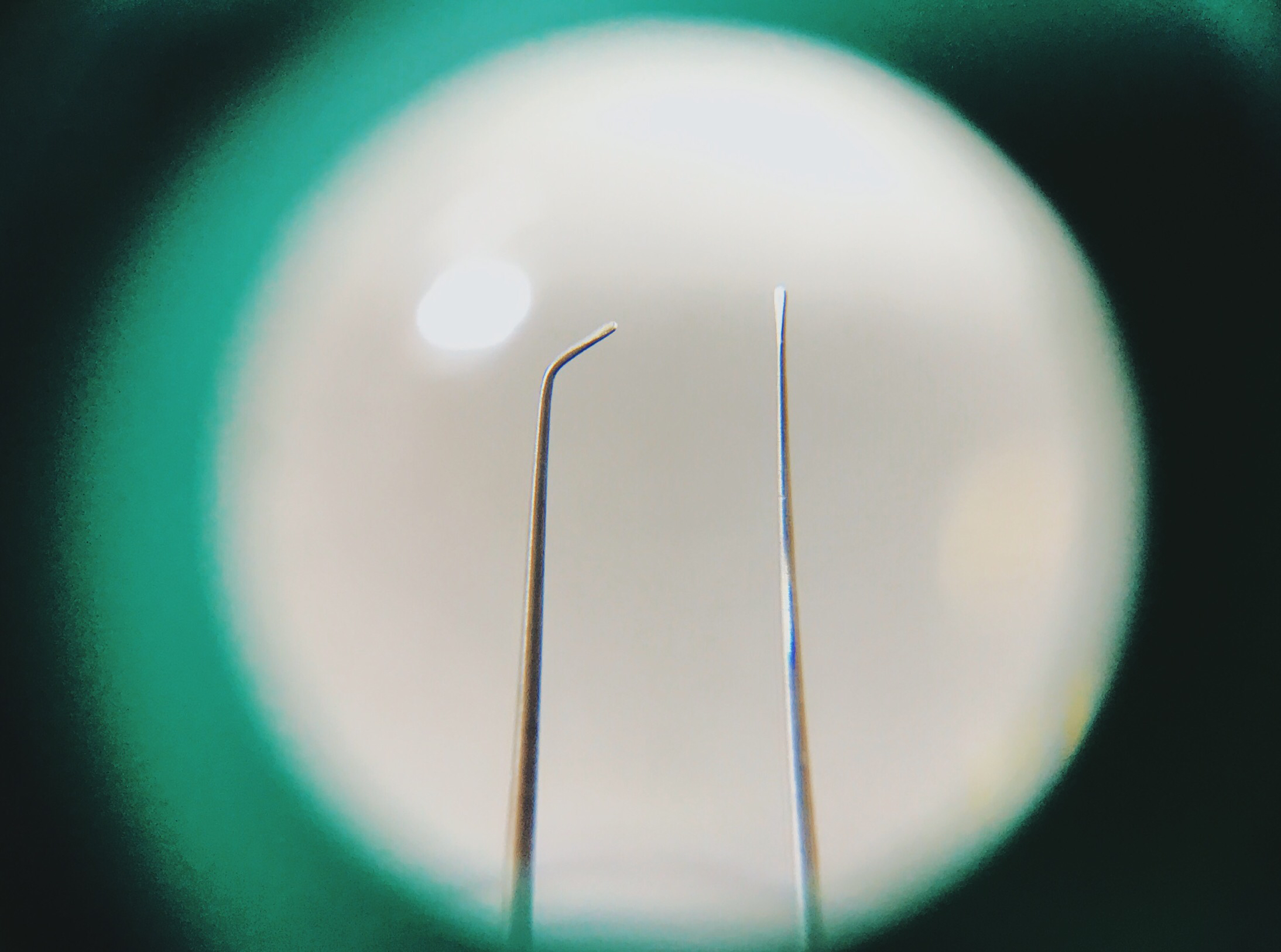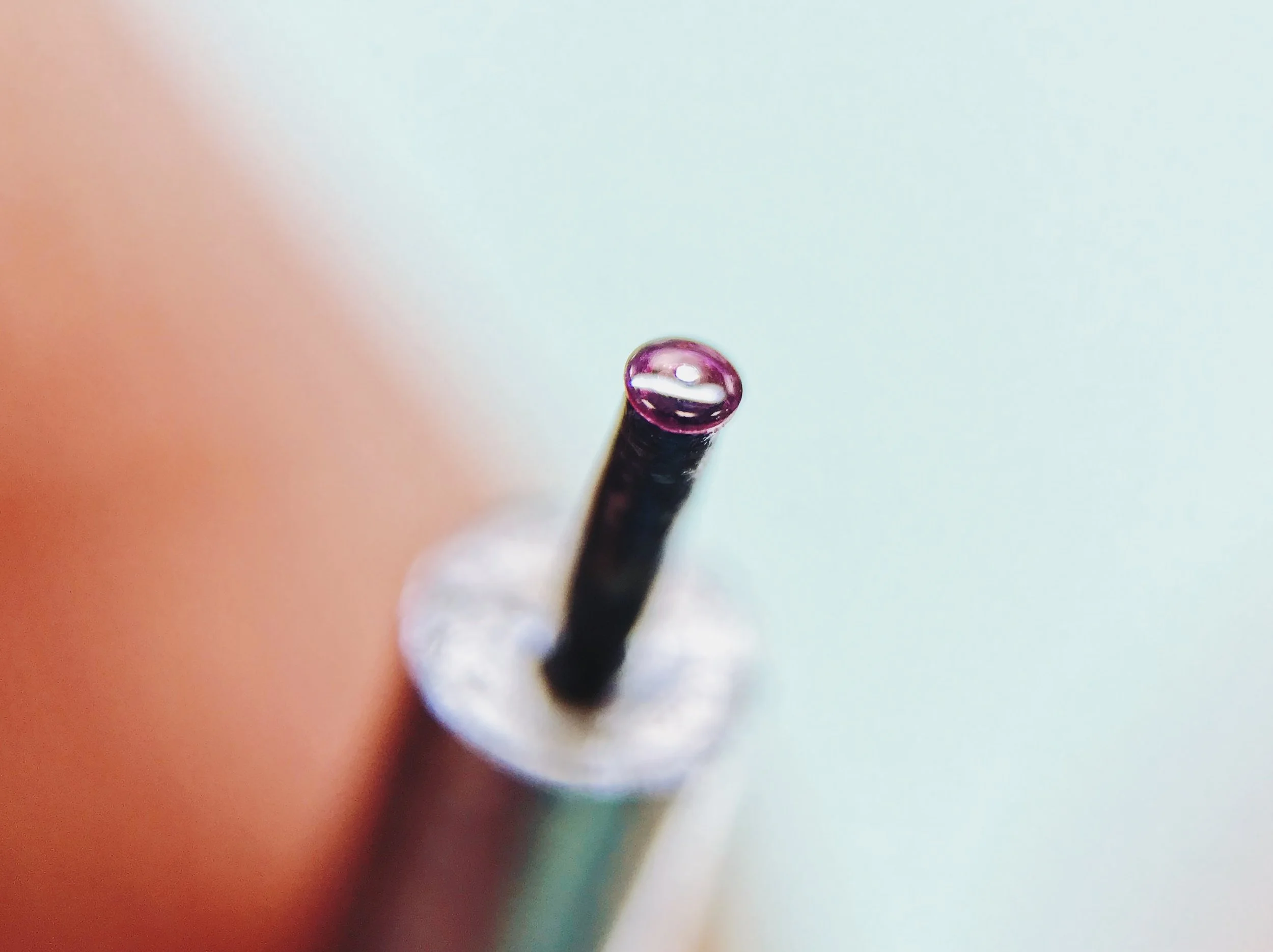Manual Balance Jewel Oiling

The most critical lubrication point in a watch movement is also the most tricky to service—the balance jewels.
An ETA 2824's upper balance jewels, disassembled and next to a 1.00 mm screwdriver blade for scale.
Balance wheel pivots are held in by pairs of jewels, consisting of a lower hole jewel and an upper cap jewel. The jewels and pivots are shaped in a way that minimizes friction and allows the balance to turn with the minimum amount of disturbance to the oscillator.
Modern watches have springs and mobile jewel systems that add shock protection to the assembly, but the principle of the jewels is the same. The flat cap jewel bears just on the very tip of the rounded balance pivot in the dial positions, and only on the rounded edges of the hole jewels in the stem positions.
Because the cap is solid, it can't be oiled like a normal donut-shaped jewel. Instead, the jewels are cleaned separately, oiled, reassembled and placed back into the watch. There also exist "automatic oilers" that shoot oil into the system when it's put together dry, but that's less fun to talk about.
To oil the jewels, the cap is placed upside down (flat side up) on the bench top. Light balance oil (Moebius 9010 for most of our applications) is applied to the middle with a dip oiler.
The oil puddle should be centered on the cap jewel, and not touching the sides. This oil needs to fit into the oil sink on the hole jewel, and if it touches the sides, capillary attraction will pull it away from the pivot.
With the cap jewel oiled, the hole jewel is held directly overhead and lowered carefully onto the cap. It's important to line these jewels up perfectly, or else the oil will wick out from the center.
Presto!
When done properly, the oil should be visible as a circle within the diameter of the cap jewel. Ideally, you'd like the circle to extend 2/3 of the way out to the edge, so a bit more than in the photo above. If the oil touches the sides and leaks, it will look like a smear or a banana shape along the border of the jewels to their settings.
If everything looks good, pop the assembled jewels into their recesses (the oil will hold them firmly together), and reattach the shock spring (if present). You're all done!
Watchmaking student at the Lititz Watch Technicum, formerly a radio and TV newswriter in Chicago.











